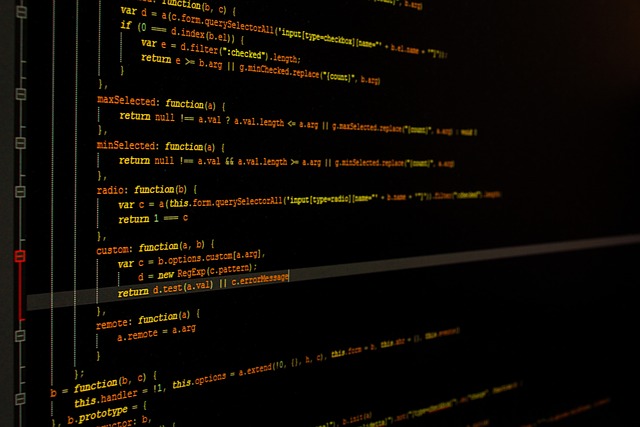
How does an operating system’s code work?
How does an operating system’s code work? It is a question that has puzzled many, and finding the answer requires an in-depth study of the concept. What lies beneath the visible layers of an OS? How can one trace the code that powers a computer? What can be done to ensure the performance of a program runs smoothly and efficiently?
The answer is complex but involves understanding the intricate interplay between hardware and software. Numerous resources, such as textbooks, academic papers, and computer scientists, have highlighted the difficulties in understanding the complexities of OS code. The issue is so complex that research institutions dedicate entire degrees to the study of system programming and operations.
At the same time, an operating system is only as good as its codebase, and ensuring efficient operations requires more than just studying the fundamentals. Managing different components of the computer’s hardware and software requires understanding of the code structure and how it relates to function and performance. It also requires an ability to evaluate the code’s performance and security to ensure the system is operating properly. Studying the principles and details of how an operating system works can involve learning assembly coding feats. Additionally, it may involve delving into topics such as math theory, hardware architectures, and memory management techniques.
In this article, you will learn about the basic concepts underpinning how operating system’s code work. We’ll look at the differences between operating systems, the basics of assembly languages, the various levels of the code, and strategies for coding and debugging. We’ll also explore techniques for debugging errors in code and gain an understanding of system automation. Altogether, these concepts provide an understanding of how the code of an operating system works under the hood, and provide insight into how to approach and manage the codebase for optimal system performance.Definitions
Operating System: An operating system (OS) is a software program that enables the computer hardware to communicate and operate with the computer software. It is a collection of software that manages computer hardware resources and provides common services for computer programs.
Code: Code is a set of instructions, written in programming language, which tells the computer what to do.
The operating system’s code is the actual, underlying instructions that define the behavior of the operating system itself. It is the program written in a computer language to allow the computer to perform its basic functions. It is the backbone of the system, and it enables all the user applications to communicate with the hardware and other software.
For the technically inclined user, the code is an important tool for troubleshooting and optimizing the system. They may use it to customize the OS to better suit their needs by making modifications to the code and/or adding new code.
For the everyday user, however, the code is typically hidden from view. The operating system can still be used, but the code and relevant processes are often invisible to the user, who relies on the OS’s graphical user interface (GUI) to interact with the OS.
In conclusion, the operating system code is responsible for controlling the underlying hardware and other systems on the system. This code is typically hidden from the user, and yet it is vital for ensuring the OS can do its job.
Conclusion
Operating systems are the core of any digital device, but few people truly understand how these systems work and operate. How do these immense systems of code effectively control the complex functions of modern digital devices? After all, the code controls the resources provided to each functioning application, as well as the order in which processes are initiated. This complex topic requires in-depth analysis and understanding of computer science.
If the reader would like to learn more about how operating systems work, they are welcome to stay tuned to our blog for further releases. We will explore the core components of operating systems and their role in these complex systems of code.
To cover a few FAQs, we have composed the following:
Q: What is an Operating System?
A: An Operating System (OS) is a type of system software that manages machine resources and provides the interface between applications and hardware. It coordinates the use of components such as memory, storage, CD/DVD drives, display and audio cards.
Q: How does an Operating System work?
A: The operating system works by allocating memory for programs that are running, controlling peripherals, providing an interface for user interaction, managing the system’s resources, and organizing data and files. It is responsible for providing a safe and efficient working environment for all applications.
Q: What are the components of an Operating System?
A: The components of an Operating System typically include the kernel, the shell, and various utilities. The Kernel is the core of the OS, and contains instructions that manage the resources of the system. The shell is the interface between the kernel and the user. Lastly, utilities are programs that assist the user in managing resources and carrying out other tasks.
Q: What are the responsibilities of an Operating System?
A: An Operating System’s primary responsibility is to manage system resources and coordinate the use of these resources. It creates a safe working environment for users and applications, and manages the memory, storage, filesystems, display, input devices, and network connections. It also ensures that processes are initiated in the correct order.
Q: What is the benefit of using an Operating System?
A: The primary benefit of using an Operating System is its ability to free the user from the burden of having to manually manage complex system resources. Additionally, the OS provides a simple user interface, which can be used to control various tasks and run applications. By using an OS, users can make the most use of their device’s computing power and concentrate their efforts on completing tasks efficiently.